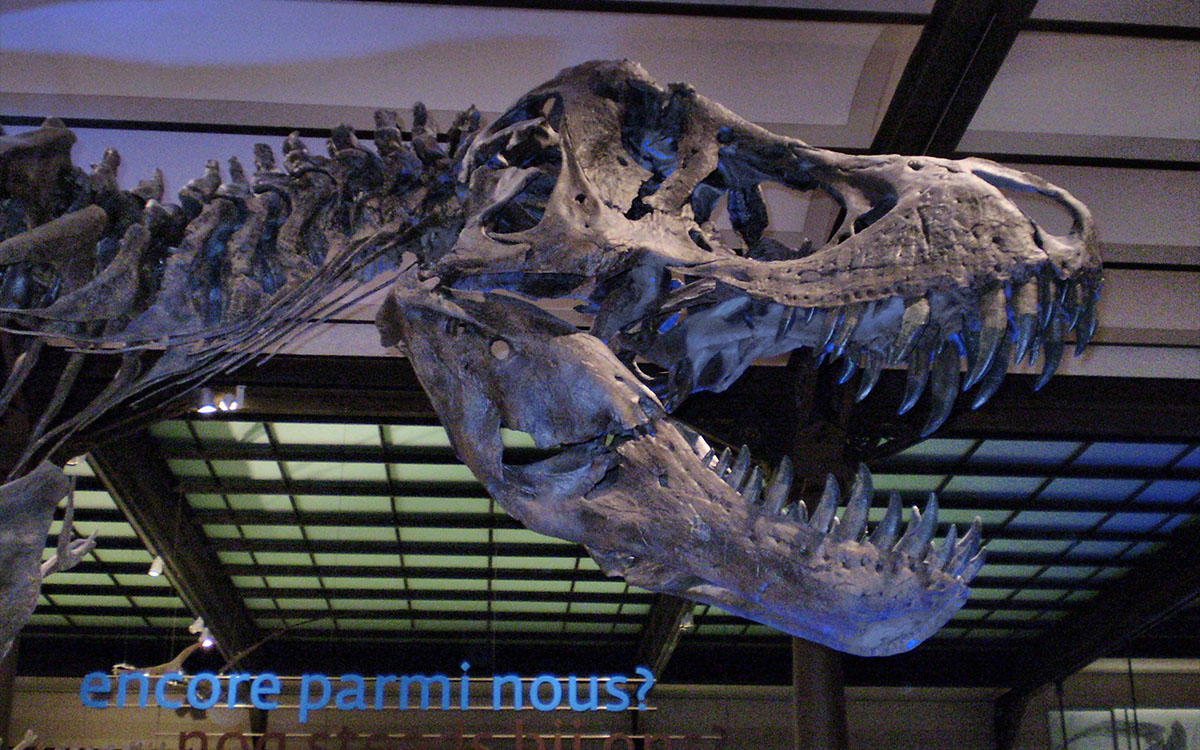a reverse look at t. rex

Since paleontologists found out that the most popular dinosaur of all time had a pair of tiny, underdeveloped arms, they’ve struggled to explain why. It seemed odd that a terrifying creature that spanned up to 42 feet from nose to tail and weighed as much as seven tons, would have puny little forearms while its relatives had muscular, fully developed appendages able to grasp prey. The current explanation is that T. Rex didn’t needed a working pair of arms because its enormous head and huge teeth were enough for the job.
While this idea does seem to make perfect sense, there’s a Lamarckian tinge to it that’s hard to stomach. It really doesn’t look like having large arms was a necessity for a T. Rex with jaws that could generate some 12,000 psi. But just because it didn’t need them to hold on to whatever it was trying to eat or for some sort of display, doesn’t mean that those arms will start to shrivel into useless attachments. Evolution doesn’t work that way and as long as the arms didn’t get in the way of hunting, there’s little reason for them to shrink. So why didn’t T. Rex retain the arms of its ancestors or develop bigger versions of them as it bulked up? Maybe rather than trying to figure out why the dinosaur’s front appendages lost their function, we should ask why its skull grew so large and powerful.
What if a mutation shrank the arms of a group of dinosaurs which would become T. Rexes and at the same time, increased the size of their skull and the power of their jaw muscles? They still had the ability to catch and kill prey. They would still pass on their genes if sexual selection for their population favored the size of the skull and the ferocity of the growl. At the same time, all the herbivores around them were getting bigger and bigger to better digest tough ferns and to protect themselves from predators. This meant only the biggest predators could make enough kills to survive and pass on their genes. So what happens to T. Rex’s ancestors? They grow into massive beasts with tiny little arms and huge, muscular heads armed with ferocious teeth that enable them to tackle plant eaters as big as a bus.
Rather than having their arms wither away because of a powerful skull, a Tyrannosaurus could have gained a massive skull with teeth the size of steak knives because it no longer had the use of its front appendages. Sexual selection and environmental factors which were at work during the Cretaceous would provide a much better and more scientific explanation for why a mighty predator had useless little forearms than some mysterious force warping the dinosaur’s body for efficiency’s sake like something out of an intelligent design textbook.





